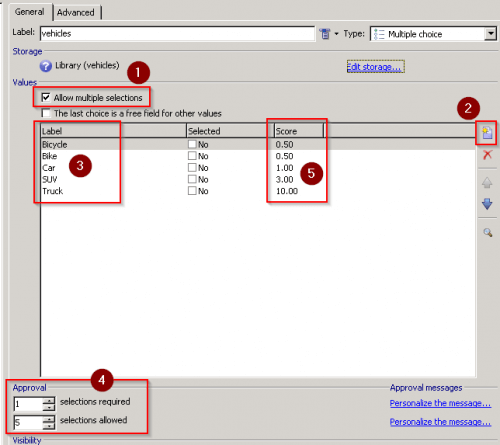Reviews are a critical part of the Software Development Lifecycle (SDLC). Conducting thorough reviews at each key milestone ensures that defects are caught early, code quality remains high, and costly rework is minimized. The more structured and effective your review process, the better your product outcomes—and the smoother your team’s collaboration with stakeholders.
To support development and QA teams, here’s a comprehensive Review Checklist that spans every major document and phase of a typical software development project. Use this as a guide to enforce consistency, accountability, and quality assurance throughout your delivery pipeline.
Functional Specification (FS) Review Checklist
Ensure the FS document clearly communicates the intended functionality. | |
| 1 | Is the FS document formatted properly and easy to understand? |
| 2 | Are all requirements clear, unambiguous, and complete? |
| 3 | Does the new functionality impact existing features or data? |
| 4 | Are integrations with satellite applications clearly mentioned? |
| 5 | Are all scenarios and sample data well-defined and realistic? |
| 6 | Have all QA-raised queries been addressed and closed? |
| 7 | Are all assumptions documented and shared with the client? |
| 8 | Are non-functional requirements (NFRs) like performance, scalability, and security defined? |
| 9 | Is terminology consistent and aligned across documents and teams? |
Impact Analysis (IA) & Level of Effort (LOE) Review Checklist
| Validate scope, risk, and effort estimation for the proposed changes. | |
| 1 | Are impacted modules/components identified for each feature? |
| 2 | Is the estimated effort justified based on complexity? |
| 3 | Are unit test (UT) effort percentages reasonable? |
| 4 | Is the documentation effort estimated correctly? |
| 5 | Are risk factors (technical or business) identified and mitigated? |
| 6 | Are third-party system dependencies included in effort estimations? |
Technical Specification (TS) Review Checklist
| Ensure the technical design aligns with requirements and implementation feasibility. | |
| 1 | Are all FS requirements mapped to technical solutions? |
| 2 | Are necessary code design changes detailed and justified? |
| 3 | Are third-party or satellite application interfaces documented and signed off? |
| 4 | For database design:
|
| 5 | Is a population script included with rollback or regression measures? |
| 6 | Are boundary conditions and edge cases handled? |
| 7 | Have all dependencies been considered and planned? |
| 8 | If alternatives exist, has the best solution been explained and defended? |
| 9 | Are logging, monitoring, and alerting strategies included? |
| 10 | Are performance benchmarks or SLAs defined and addressed? |
Test Case Review Checklist
| Check that the testing strategy is complete and risk-aware. | |
| 1 | Is there 100% functional and technical test coverage? |
| 2 | Are all test case prerequisites mentioned? |
| 3 | Are regression and boundary test scenarios covered? |
| 4 | Are simulators or stubs used where integration is pending? |
| 5 | Are test cases aligned with real-world user journeys or edge cases? |
| 6 | Is there a rollback testing or failover test scenario, where applicable? |
| 7 | Are negative test cases or misuse cases included? |
Requirement Traceability Matrix (RTM) Checklist
| Ensure every requirement is traceable across project artifacts. | |
| 1 | Is each requirement mapped through FS, TS, test cases, and code? |
| 2 | Has the RTM been updated post any FS revisions? |
| 3 | Are all changes traceable to change requests or tickets? |
Code Review Checklist
| Maintain coding standards and ensure quality implementation. | |
| 1 | Is the implementation aligned with TS document sections? |
| 2 | Are coding conventions and style guidelines followed? |
| 3 | Is the code clean, modular, and optimized for performance? |
| 4 | Are meaningful comments and documentation present? |
| 5 | Are industry best practices reflected in the code? |
| 6 | Have all unit tests been successfully executed? |
| 7 | Are code smells or potential refactoring opportunities identified? |
| 8 | Are security risks (e.g., injection, hardcoded secrets) reviewed? |
| 9 | Are third-party library usages reviewed for compliance and licensing? |
Delivery Readiness Review Checklist
| Ensure the final package is ready for deployment and handover. | |
| 1 | Has the code been baselined and finalized? |
| 2 | Has the delivery package undergone full internal validation? |
| 3 | Was local installation tested before sending to the client? |
| 4 | Has an anti-virus scan been performed on the package? |
| 5 | Are file names and package nomenclature correct and documented? |
| 6 | Is a detailed installation guide included? |
| 7 | Has rollback/un-installation procedure been verified and documented? |
| 8 | Has client environment compatibility been validated (e.g., OS, DB version)? |
| 9 | Has versioning and release notes been reviewed and included? |
Final Thoughts
An effective software review checklist is not just about ticking boxes—it’s about building a disciplined process that prioritizes quality, transparency, and teamwork. From requirements to delivery, reviews reduce rework, prevent defects, and ensure the solution meets both business and technical expectations.

